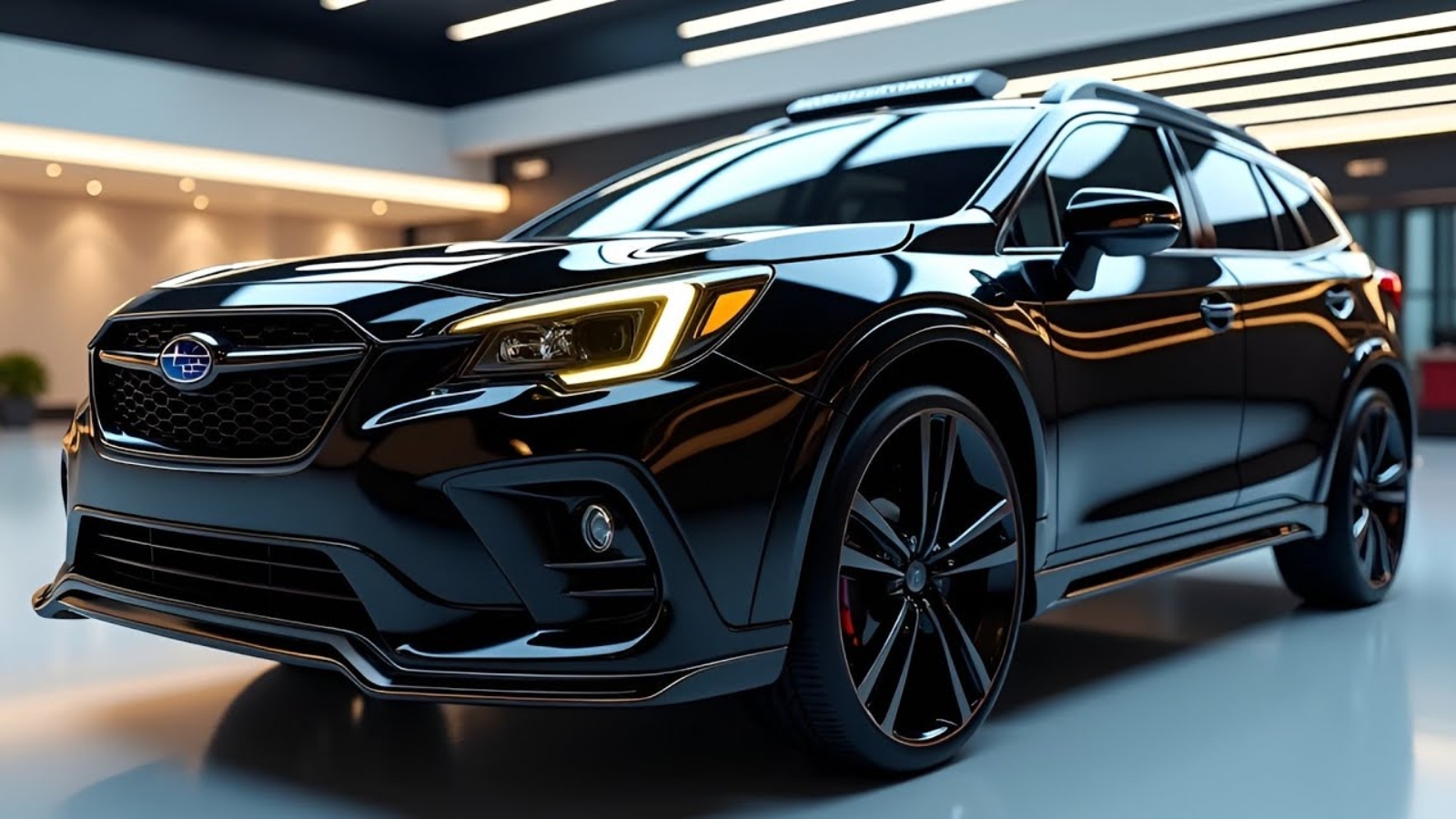Subaru just pulled the covers off their completely redesigned Outback at the New York Motor Show, and honestly, it’s quite a departure from what we’re used to seeing. If you’ve been following the Outback’s evolution over the years, you’ll notice this seventh-generation model looks more like a proper SUV than the lifted wagon we’ve known and loved.
What’s New and Different This Time?
The biggest change? Subaru has given the Outback a much boxier, more upright stance. The front end stands taller, and they’ve raised the roofline by 51mm, which might not sound like much, but it completely transforms the vehicle’s profile. Gone is that sleek, wagon-like silhouette – this new Outback means business.
You’ll also notice the grille is significantly larger, especially on the rugged Wilderness version where Subaru boldly spells out their name across the front in big black letters. It’s a confident move that shows they’re not hiding what this vehicle is anymore.

Two Engine Options to Choose From
Base 2.5-Liter Engine
The standard powerplant remains a naturally aspirated 2.5-liter flat-four engine, but Subaru has tweaked it to produce 134kW of power and 241Nm of torque. This should be plenty for most daily driving situations and light adventure duties.
Turbocharged 2.4-Liter Option
For those wanting more punch, there’s a turbocharged 2.4-liter engine delivering 194kW and 376Nm of torque. This is the only engine available in the Wilderness variant, and for good reason – when you’re tackling serious terrain, you want that extra power on tap.
Both engines come paired with Subaru’s continuously variable transmission (CVT) that now includes a manual shift mode with eight simulated gears. All models get the brand’s Symmetrical All-Wheel Drive system with improved center differential lockup response.
The Wilderness Takes Things Further
If the regular Outback isn’t rugged enough for your adventures, the Wilderness variant pushes the envelope even further. Ground clearance increases from 221mm on standard models to an impressive 241mm on the Wilderness. That’s genuine off-road capability right there.
The Wilderness also gets electronically controlled dampers, matte black exterior cladding, hexagonal fog lights, and those distinctive copper-finish accents that really make it stand out. Subaru fits it exclusively with 17-inch matte black wheels wrapped in Bridgestone Dueler all-terrain tires.
Off-Road Performance Comparison
| Feature | Standard Outback | Wilderness Variant |
|---|---|---|
| Ground Clearance | 221mm | 241mm |
| Approach Angle | 18 degrees | 20 degrees |
| Breakover Angle | 19.4 degrees | 21.2 degrees |
| Departure Angle | 21.4 degrees | 22.5 degrees |
| Wheel Size | Up to 19″ | 17″ (All-terrain) |
| Engine | 2.5L or 2.4L Turbo | 2.4L Turbo Only |
Interior Gets a Tech Upgrade
Bigger, Better Infotainment
The cabin receives a substantial upgrade with a new 12.1-inch touchscreen (up from 11.6 inches) that returns to landscape orientation. Subaru promises this new system responds much faster thanks to an upgraded processor, and it includes wireless Apple CarPlay and Android Auto connectivity.
Behind the steering wheel, you’ll find a 12.3-inch digital instrument cluster with various display modes, including a map view and something called “Calm Mode” designed to reduce driver distraction during longer journeys.
Physical Controls Make a Comeback
Here’s something many drivers will appreciate – Subaru brought back traditional climate control buttons and knobs instead of burying everything in touchscreen menus. They’ve also repositioned the cupholders next to the gear shifter for easier access and enlarged the door bottle holders.
More Space for People and Cargo
Thanks to that taller roofline, you get more headroom throughout the cabin, plus Subaru claims increased passenger and cargo space overall. The cargo area now offers 980 liters of space – that’s 57 liters more than before, thanks to the raised load floor.
The standard roof rails can handle 363kg of static load and 100kg dynamic load. Subaru even says this is their first vehicle that can support 100kg of lateral load from the crossbar sides, meaning you could theoretically hang a hammock between them.
Comfort and Noise Improvements
Subaru has redesigned the seats, mounting them directly to the chassis for what they promise is better long-distance comfort and reduced head movement on bumpy roads. They’ve also worked on reducing cabin noise, claiming a 10% reduction in wind noise through improved aerodynamics.
The company says lateral body sway has been reduced by 42% compared to the outgoing model, which should make highway cruising more comfortable and composed.
When Can You Get One?
The 2026 Outback launches in the US market in late 2025, with the Wilderness following in early 2026. Subaru will manufacture all variants in Japan now, including the Wilderness that was previously built only in America.
For Australian buyers, Subaru hasn’t confirmed specific timing or pricing yet, but given the Outback’s popularity here (it was the brand’s third best-seller last year), expect announcements soon.
Safety Technology Included
The new Outback comes standard with the latest EyeSight safety suite, powered by both camera and radar systems. This includes automatic emergency braking, adaptive cruise control, lane keeping assist, and blind spot monitoring – all the modern safety features you’d expect in 2026.
Frequently Asked Questions
Q: Will there be a hybrid version of the 2026 Outback?
A: Subaru hasn’t announced hybrid options yet, but they’ll likely introduce one eventually given current market trends.
Q: Is the Wilderness significantly more expensive than regular Outback models?
A: Pricing hasn’t been announced, but Wilderness variants typically command a premium for their enhanced off-road capabilities and exclusive features.
Q: Can I still get the Outback with a manual transmission?
A: No, all 2026 Outback models come exclusively with CVT automatic transmission, though it includes a manual mode with eight simulated gears.
2025 Skoda Kodiaq All New Seven Seat SUV Arriving Early 2025
